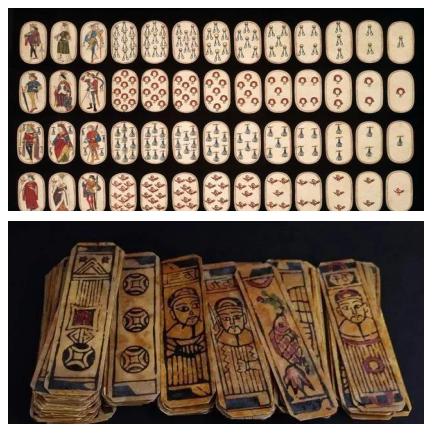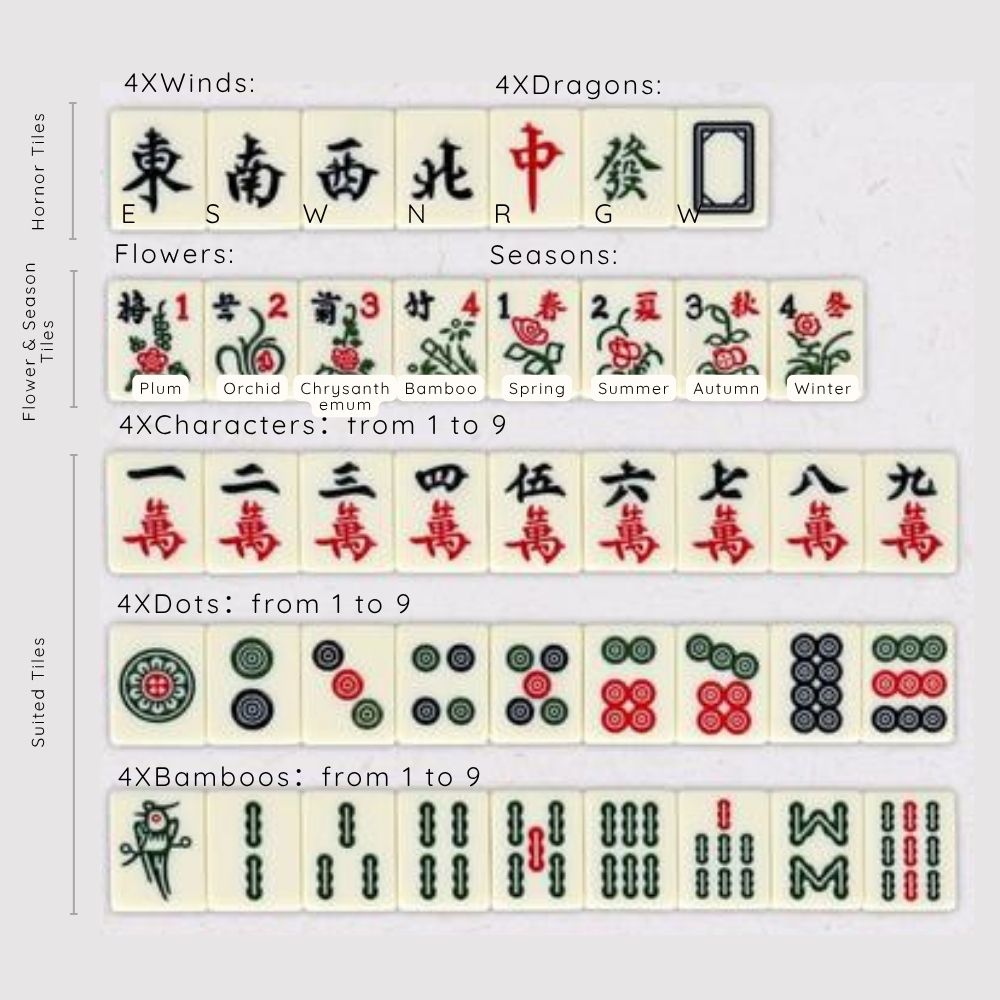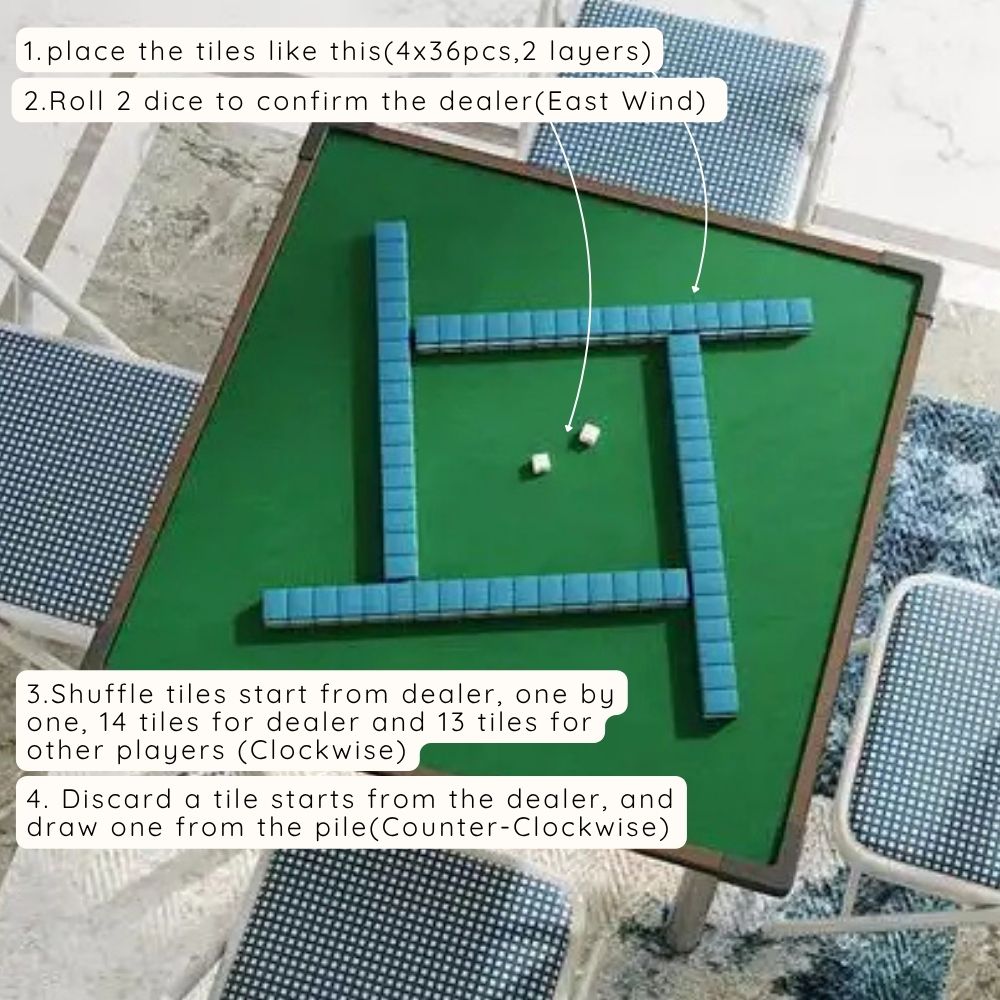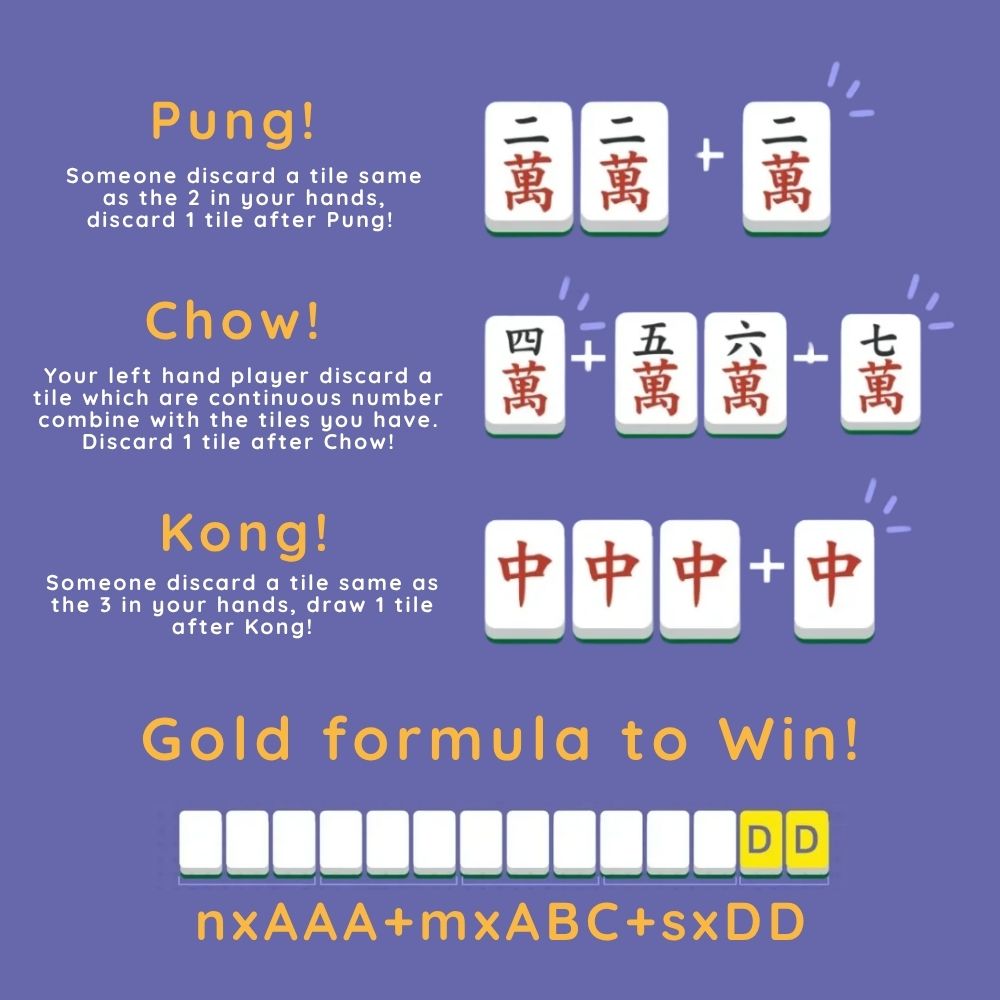History of Mahjong
Mahjong has a long history. It is said to have originated from the “leaf – playing cards” in the Ming Dynasty. In the late Qing Dynasty, it gradually took on the form we know today. It became popular in the lower classes of society at first and then spread widely among different social strata.

Cultural Significance
Mahjong is not just a game but also reflects traditional Chinese culture. The tiles include characters, bamboo, dots, and various honor tiles, which contain elements of Chinese characters, numbers, and traditional cultural symbols. It also reflects the Chinese philosophy of balance and harmony, as players need to balance offense and defense and cooperate with partners.
How to play Mahjong?
Recognize Tiles – 144 tiles in total
• Suited Tiles:
There are 3 types of suits, namely dots (also known as circles), bamboos, and characters. Each suit has numbers from 1 to 9, and there are 4 tiles of each number. As shown in the picture, the dot tiles are represented by a series of colored circles, the bamboo tiles are represented by bamboo sticks (the number 1 bamboo tile is usually a bird), and the character tiles depict Chinese characters.
• Honor Tiles:
They include dragons and winds. There are 3 dragon tiles, namely the red dragon (with the Chinese character 中), the green dragon (with the character 發), and the white dragon (originally an empty white tile with a blue border). There are also 4 wind tiles, representing the four cardinal directions of east, south, west, and north.
• Flower and Season Tiles (optional in some rules):
They are bonus tiles, usually including plum, orchid, chrysanthemum, and bamboo flowers, as well as tiles for each season. They are similar to “joker” cards and can bring extra points.

Game Setup
• Determine the Dealer: Roll two dice, and the player who rolls the highest becomes the east wind, that is, the dealer. The other players are the south wind, west wind, and north wind in a clockwise direction.
• Shuffle and Deal: Place all the tiles face – down in the middle of the table and shuffle them. The dealer deals 13 tiles to each player, one by one. After dealing, there are some remaining tiles in the middle, which are used for drawing during the game.

Gameplay
• Drawing and Discarding:
Draw a tile from the pile. If they want to keep it, they must discard a tile from their hand. The drawing order is counter – clockwise. If the east wind has 14 tiles when using the wall – dealing method, the east wind discards a tile first.
• Forming Melds:
There are three types of melds. A “pung” is formed by three identical tiles. A “chow” is composed of three consecutive tiles of the same suit. A “kong” is made up of four identical tiles. When a player has two identical tiles in hand and someone else discards the same tile, they can “pung” it. If a player has three identical tiles in hand and someone else discards the same one, they can “kong” it. In some rules, players can also “chow” consecutive tiles of the same suit from the (the player on the left).
• Winning:
The goal is to form a winning hand, usually 4 melds and a pair of matching tiles. There are also some special winning patterns, such as all – pung hand, pure – suit hand, etc. When a player forms a winning hand, they declare “mahjong” and win the game.

